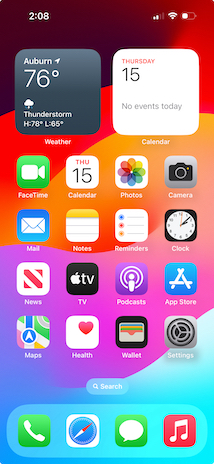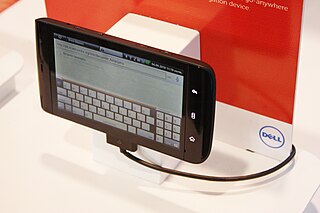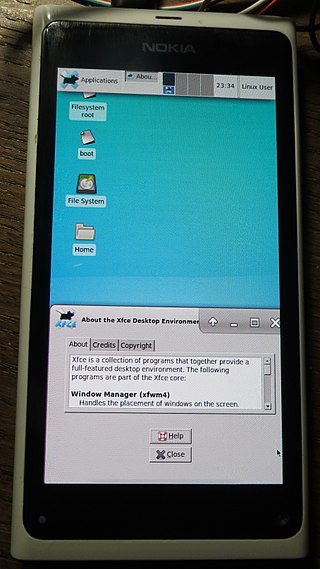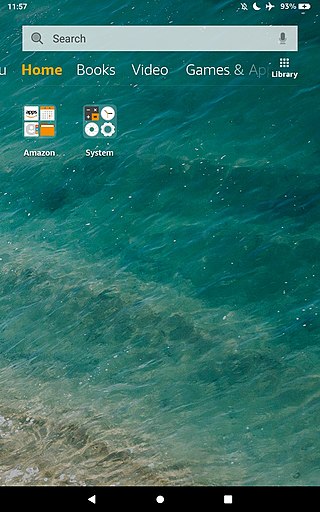
Privilege escalation is the act of exploiting a bug, a design flaw, or a configuration oversight in an operating system or software application to gain elevated access to resources that are normally protected from an application or user. The result is that an application with more privileges than intended by the application developer or system administrator can perform unauthorized actions.
An over-the-air update, also known as over-the-air programming, is an update to an embedded system that is delivered through a wireless network, such as Wi-Fi or a cellular network. These embedded systems include mobile phones, tablets, set-top boxes, cars and telecommunications equipment. OTA updates for cars and internet of things devices can also be called firmware over-the-air (FOTA). Various components may be updated OTA, including the device's operating system, applications, configuration settings, or parameters like encryption keys.
Safe mode is a diagnostic mode of a computer operating system (OS). It can also refer to a mode of operation by application software. Safe mode is intended to help fix most, if not all, problems within an operating system. It is also widely used for removing rogue security software.
Mobile malware is malicious software that targets mobile phones or wireless-enabled Personal digital assistants (PDA), by causing the collapse of the system and loss or leakage of confidential information. As wireless phones and PDA networks have become more and more common and have grown in complexity, it has become increasingly difficult to ensure their safety and security against electronic attacks in the form of viruses or other malware.
Unlock, unlocking and unlockable may refer to:

iOS is a mobile operating system developed by Apple Inc. exclusively for its smartphones. It was unveiled in January 2007 for the first-generation iPhone, launched in June 2007.

The HTC Dream is a smartphone developed by HTC. First released in October 2008 for $179 with a 2-year contract to T-Mobile, the Dream was the first commercially released device to use the Linux-based Android operating system, which was purchased and further developed by Google and the Open Handset Alliance to create an open competitor to other major smartphone platforms of the time, such as Symbian, BlackBerry OS, and iPhone OS. The operating system offers a customizable graphical user interface, integration with Google services such as Gmail, a notification system that shows a list of recent messages pushed from apps, and Android Market for downloading additional apps.
On Apple devices running iOS and iOS-based operating systems, jailbreaking is the use of a privilege escalation exploit to remove software restrictions imposed by the manufacturer. Typically it is done through a series of kernel patches. A jailbroken device permits root access within the operating system and provides the right to install software unavailable through the App Store. Different devices and versions are exploited with a variety of tools. Apple views jailbreaking as a violation of the end-user license agreement and strongly cautions device owners not to try to achieve root access through the exploitation of vulnerabilities.
Pre-installed software is software already installed and licensed on a computer or smartphone bought from an original equipment manufacturer (OEM). The operating system is usually factory-installed, but because it is a general requirement, this term is used for additional software apart from the bare necessary amount, usually from other sources.
blackra1n is a program that jailbreaks versions 3.1, 3.1.1 and 3.1.2 of Apple's operating system for the iPhone and the iPod Touch, known as iOS.

The Dell Streak 5 is a smartphone/tablet hybrid ("phablet") from Dell that uses the Android operating system, released in 2010. It comes with a 5-inch (13 cm) capacitive touchscreen and two cameras, a 5MP one with dual-LED flash on the back and a VGA-resolution one on the front for video calling; both are capable of video.
Rooting is the process by which users of Android devices can attain privileged control over various subsystems of the device, usually smartphones and tablets. Because Android is based on a modified version of the Linux kernel, rooting an Android device gives similar access to administrative (superuser) permissions as on Linux or any other Unix-like operating system such as FreeBSD or macOS.

The hacking of consumer electronics is an common practice that users perform to customize and modify their devices beyond what is typically possible. This activity has a long history, dating from the days of early computer, programming, and electronics hobbyists.

The Samsung Captivate Glide (SGH-i927) as it is called in the United States, and sold as the Samsung Galaxy S Glide (SGH-i927R) in Canada, is the first physical QWERTY Galaxy S class smartphone running under the Android operating system to be released by Samsung for AT&T (US) and Rogers Wireless (Canada).
Samsung Knox is a proprietary security and management framework pre-installed on most Samsung mobile devices. Its primary purpose is to provide organizations with a toolset for managing work devices, such as employee mobile phones or interactive kiosks. Samsung Galaxy hardware, as well as software such as Secure Folder and Samsung Wallet, make use of the Knox framework.

Fire OS is a mobile operating system based on the Android Open Source Project (AOSP). It is developed by Amazon for their devices. Fire OS includes proprietary software, a customized user interface primarily centered on content consumption, and heavy ties to content available from Amazon's storefronts and services.
The Pangu Team, is a Chinese programming team in the iOS community that developed the Pangu jailbreaking tools. These are tools that assist users in bypassing device restrictions and enabling root access to the iOS operating system. This permits the user to install applications and customizations typically unavailable through the official iOS App Store.
Custom firmware, also known as aftermarket firmware, is an unofficial new or modified version of firmware created by third parties on devices such as video game consoles, mobile phones, and various embedded device types to provide new features or to unlock hidden functionality. In the video game console community, the term is often written as custom firmware or simply CFW, referring to an altered version of the original system software inside a video game console such as the PlayStation Portable, PlayStation 3, PlayStation Vita/PlayStation TV, PlayStation 4, Nintendo 3DS and Nintendo Switch. Installing custom firmware on some devices requires bootloader unlocking.

Bootloader unlocking is the process of disabling the bootloader security that makes secure boot possible. It can make advanced customizations possible, such as installing a custom firmware. On smartphones this can be a custom Android distribution or another mobile operating system. Some bootloaders are not locked at all, others can be unlocked using a standard command, others need assistance from the manufacturer. Some do not include an unlocking method and can only be unlocked through a software exploit.

The Android recovery mode is a mode of Android used for installing updates and wipe data. It consists of a Linux kernel with ramdisk on a separate partition from the main Android system.









